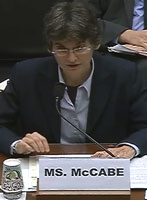 Our latest ZimmPoll asked the question, “How should Congress handle tax breaks?”
Our latest ZimmPoll asked the question, “How should Congress handle tax breaks?”
Congress is once again considering a package of tax breaks for businesses and individuals that include everything from section 179 deductions to renewable energy tax credits. An overwhelming majority believe a flat tax is the answer. Will Congress think the same? Making tax breaks permanent and not allowing them at all tied for second place in our poll. Still looks like many are all over the board on what they think should be done.
Here are the poll results:
- Make them permanent – 18%
- One year at a time – 10%
- Keep letting them expire & renew – 3%
- Don’t allow any – 18%
- Two words – FLAT TAX – 43%
- Don’t know – 5%
- Don’t care – 3%
Our new ZimmPoll is now live and asks the question, What’s the biggest challenge for the seed industry?
The seed industry gathered in Chicago for the annual seed expo and research symposium for corn, soybeans and sorghum and many issues were discussed. Since all of agriculture depends in some way on seed, the long term survival of that industry impacts everything from food and feed, to fuel and fiber, to flowers. What do you see as the biggest issues for the future of the seed industry?









